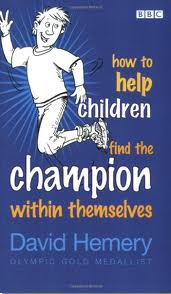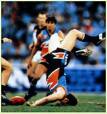Posts Tagged ‘injury’
How can I stop my child getting injured?
The evidence is quite stark if your child is spending too much time in organised activity rather than free play, if they have specialised in one sport and if they have gone through their growth spurt, then they are more likely to get injured (1).
Read More10 Fitness Tips and Myths for Rugby: Simon Worsnop
Top level rugby is a complex multi faceted sport.
Rugby union has more individual position specific requirements than rugby league.
At top level training will need to reflect this e.g. static strength and neck strength requirements in scrimmaging forwards that are not required to such an extent in rugby league.
Read MoreSummer reading list for Coaches
What books are you reading this summer?
It seems to be the time to read more books, not sure whether that is due to rubbish tv, more people on holiday, or less email traffic. Here are some of mine.
 “How to help Children find the Champion within themselves”. David Hemery
“How to help Children find the Champion within themselves”. David Hemery
This is a great little book, easy to read, but with valuable insights into coaching young people. A must read for the enthusiastic parent, or coach of yongsters.
Read More

